
Corona Australis is a constellation in the Southern Celestial Hemisphere. Its Latin name means "southern crown", and it is the southern counterpart of Corona Borealis, the northern crown. It is one of the 48 constellations listed by the 2nd-century astronomer Ptolemy, and it remains one of the 88 modern constellations. The Ancient Greeks saw Corona Australis as a wreath rather than a crown and associated it with Sagittarius or Centaurus. Other cultures have likened the pattern to a turtle, ostrich nest, a tent, or even a hut belonging to a rock hyrax.

Triangulum Australe is a small constellation in the far Southern Celestial Hemisphere. Its name is Latin for "the southern triangle", which distinguishes it from Triangulum in the northern sky and is derived from the acute, almost equilateral pattern of its three brightest stars. It was first depicted on a celestial globe as Triangulus Antarcticus by Petrus Plancius in 1589, and later with more accuracy and its current name by Johann Bayer in his 1603 Uranometria. The French explorer and astronomer Nicolas Louis de Lacaille charted and gave the brighter stars their Bayer designations in 1756.

Terra Australis was a hypothetical continent first posited in antiquity and which appeared on maps between the 15th and 18th centuries. Its existence was not based on any survey or direct observation, but rather on the idea that continental land in the Northern Hemisphere should be balanced by land in the Southern Hemisphere. This theory of balancing land has been documented as early as the 5th century on maps by Macrobius, who uses the term Australis on his maps.

Agathis, commonly known as kauri or dammara, is a genus of 22 species of evergreen tree. The genus is part of the ancient conifer family Araucariaceae, a group once widespread during the Jurassic and Cretaceous periods, but now largely restricted to the Southern Hemisphere except for a number of extant Malesian Agathis.

Phragmites is a genus of four species of large perennial reed grasses found in wetlands throughout temperate and tropical regions of the world.
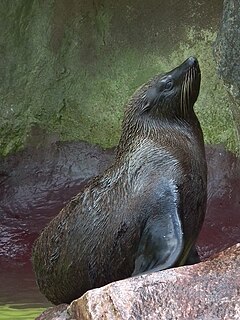
The South American fur seal breeds on the coasts of Peru, Chile, the Falkland Islands, Argentina, Uruguay and Brazil. The total population is around 250,000. However, population counts are sparse and outdated. Although Uruguay has long been considered to be the largest population of South American fur seals, recent census data indicates that the largest breeding population of A. a. australis are at the Falkland Islands followed by Uruguay. The population of South American fur seals in 1999 was estimated at 390,000, a drop from a 1987 estimate of 500,000 - however a paucity of population data, combined with inconsistent census methods, makes it difficult to interpret global population trends.
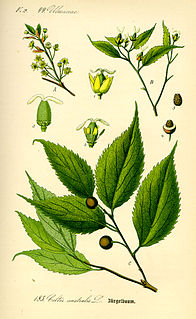
Celtis australis, commonly known as the European nettle tree, Mediterranean hackberry, lote tree, lodogno or boboler, or honeyberry, is a deciduous tree native to Southern Europe, North Africa, and Asia Minor. The tree was introduced to England in 1796.

Galaxy is a former provider of pay television programming in Australia via satellite and wireless cable (microwave) delivery methods.

Alan John Scarfe is a British-Canadian actor, stage director and author. He is a former Associate Director of the Stratford Festival (1976–77) and the Everyman Theatre in Liverpool (1967–68). He won the 1985 Genie Award for Best Performance by an Actor in a Supporting Role for his role in The Bay Boy and earned two other Genie best actor nominations for Deserters (1984) and Overnight (1986) and a Gemini Award nomination for best actor in aka Albert Walker (2003). He won a Jessie Award for best actor in 2005 for his performance in Trying at the Vancouver Playhouse. In 2006 he won the Jury Prize for best supporting actor at the Austin Fantastic Fest in The Hamster Cage and the Vancouver Film Critics Circle honorary award for lifetime achievement.
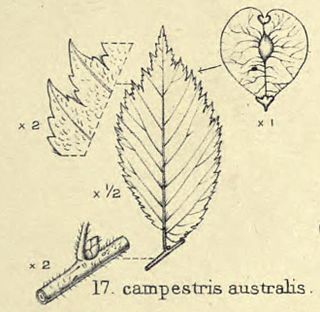
The elm cultivar Ulmus 'Australis' [:'southern'], reputedly endemic to south-eastern France, Switzerland and Italy, is a little-known tree considered by various authorities to have been a variety of Ulmus minor or Ulmus × hollandica.
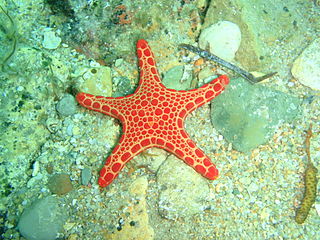
Goniasteridae constitute the largest family of sea stars, included in the order Valvatida. They are mostly deep-dwelling species, but the family also include several colorful shallow tropical species.

Phragmites australis, known as the common reed, is a broadly distributed wetland grass growing nearly 20 ft (6 m) tall.

Grevillea australis, commonly known as alpine grevillea or southern grevillea, is a species of flowering plant in the family Proteaceae and is endemic to south-eastern Australia. It is a spreading to prostrate shrub with simple, narrowly egg-shaped leaves and groups of white to pale pink flowers with a glabrous ovary.

Izrael Chaim Wilner, nom de guerre "Arie" and "Jurek" was a Jewish resistance fighter during World War II, member of the Jewish Fighting Organization's (ŻOB) leadership, a liaison between ŻOB and the Polish Home Army, a poet, and a participant in the Warsaw Ghetto Uprising.

Tosia Malamud was a Mexican sculptor of Ukrainian origin, one of the first female graduates of Mexico's Escuela Nacional de Artes Plásticas. Her family immigrated to Mexico when she was four, and her talent for art appeared early. She went to art college against her parents' wishes, graduating in 1943. Because of family obligations, her career did not begin until the mid-1950s with two important exhibitions that brought her style to the attention of critics. From then until her death, she exhibited her work in Mexico and abroad. She also created large and small works for public spaces and was considered to be the best bust maker in Mexico at the time. In addition to depictions of notable people, she created works mostly dealing with maternity, family and childhood which can be found in places such as the Museo de Arte Moderno and the Hospital Siglo XXI in Mexico City. La familia has become iconic for Mexico's Instituto Mexicano de Seguro Social and Viento for the Museo de Arte Contemporáneo in Morelia.

Joshua Ryne Goldberg is an American internet troll, convicted of attempting a bombing on the 14th anniversary of the September 11 attacks while posing as an Islamic terrorist affiliated with ISIS.

The bronze bust of Albert Einstein is installed in Mexico City's Parque México, in Mexico. The head was sculpted by Tosia Malamud, a Mexican artist whose family emigrated from Ukraine in 1927. The sculpture commemorates the 100th anniversary of the Armenian genocide. The statue seems to have been donated by Mexico City's Jewish community.
Tosia is a Polish feminine given name that is a diminutive form of Antonina or Antonia used in Poland. Notable people with this name include the following:
Ukrainians in Mexico are a Ukrainian ethnic minority living in Mexico. The total number of diaspora is between 400 and 1,500 people, of whom 230 are on the consular register. The first Ukrainians in the country were natives of the Austro-Hungarian Empire, who settled in the city of Campeche. Most migrants in rural areas are employed in agriculture in central Mexico, northern Mexico, and the Yucatan Peninsula. Ukrainians also live in Mexico City, Puebla, Cuernavaca, Toluca, Monterrey, Campeche, Veracruz and Acapulco. A significant proportion of migrants are scientists, teachers, musicians, circus artists and artists who left Ukraine after 1991. There is also a small group of Ukrainian women who are married to Mexican citizens.
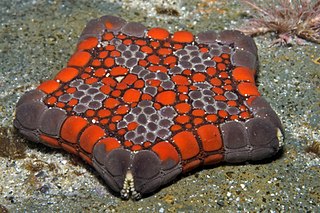
Tosia is a genus of starfish belonging to the family Goniasteridae. The species of this genus are found in Australia, New Zealand, and South Africa.


















